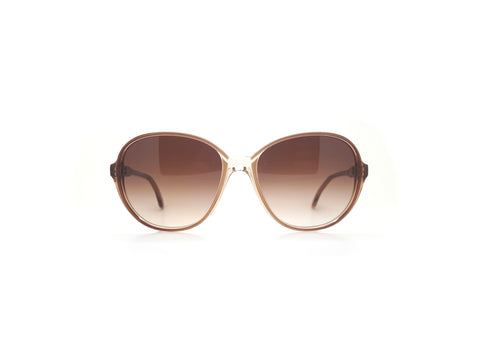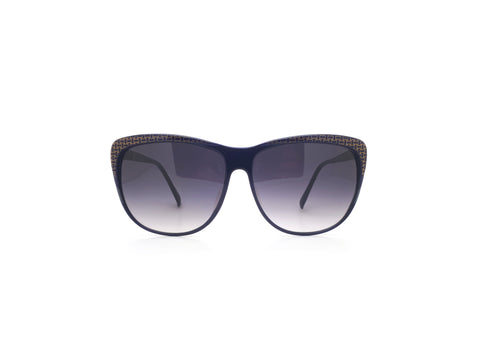How sustainable is the eyewear industry?
The eyewear industry is extremely energy-consuming, polluting and wasteful. Despite modest progress in the past few years, the industry has not taken it’s ethical and environmental responsibilities seriously enough. So we decided to do some sleuthing and find out the current state of sustainability in eyewear in 2020.
Essilor-Luxottica alone, the largest eyewear company in the world with over 25% of the global market, produce over 1 billion pairs of lenses and frames annually As co-founder of Ed & Sarna Vintage eyewear I have a unique insight into the extent of overproduction that has occurred over the last 50 years. We constantly unearth new supplies of unworn vintage designer glasses frames and sunglasses, the largest of which has over a million pairs in storage. Sadly, these were just a tiny fraction of overall production and most of the production will have ended up in landfill or found polluting our oceans.
What Waste Is Created in a Modern Eyewear Supply Chain
For years the eyewear supply chain has been shrouded in secrecy, with just a few dominant players commanding control of almost 80% of the market it has also been one of the slowest major industries to make changes towards sustainability.
For every pair of sunglasses that reach the face of a customer, there has been a long journey from its initial design and prototyping to moving into mass production. Sadly, along the way, the environmental costs build up at every step.
Most sunglasses in the world are made from a combination of two materials, metal and cellulose acetate. Each plastic frame is cut from a rectangular sheet of acetate which, due to the nature of eyewear design requires two big holes in the middle, up to 80% of the plastic used in manufacture is essentially wasted.

Once you have milled your frame from the acetate sheet it becomes time to start fitting the metal screws and hinges to build the functionality and form into the frame. At this stage, 20-30% of the metal used is wasted as they are trimmed down to create a smooth and comfortable fit.
You now have a new fully formed frame in your hand, how much more waste can possibly be created you ask! Well if these are not going to become sunglasses then they will need to be fitted with plastic demo lenses which will ensure the frame doesn’t warp whilst it is kept in storage. When a customer comes to purchase their prescription lenses with the frame these demo lenses are more than often discarded to straight into the bin. Even an ethically conscious company like Ace & Tate held up their hands in 2019 and admitted they had to throw out 100% of all of their demo lenses so it doesn’t look great for the Specsavers and Sunglass Huts of this world!
What about Contact Lenses?
No one ever asked for bad eyesight which makes it even more prescient for the ecological impact of corrective eyewear to be addressed. Demand for contact lenses has been growing consistently for decades.
We are all well aware that of plastic microbeads within the cosmetic industry and the eyewear industry might just have its own enfant terrible in disposable contact lenses.

A study by the American Chemical Society of the US eyewear market found that when surveyed 15-20% of disposable contact lenses wearers were flushing their daily lenses down the sink each day. Given that 45 million Americans use daily contact lenses that is a serious amount of plastic entering the water table annually.
Once flushed these tiny plastic lenses pose a risk to human and marine life. The ACS study also found that when these plastic lenses reached wastewater treatment centres that microbes were “weakening bonds in plastic polymers” of contact lenses. In laymen’s terms, these treatment plants are producing microplastics from the larger plastic items such as disposable contact lenses.
In the US alone even if only 15% of people were to actually be flushing their lenses daily that still equates to over 1.8 billion contact lenses a year. That is a lot of waste – but is it avoidable? There has recently been some progress in producing rapidly biodegrading lenses produced from Soybeans but currently, these are not available widely or at a cost-effective price point. So, if you rely on contact lenses for sports and other activities where you feel uncomfortable wearing glasses make sure you are recycling your lenses with a scheme like this one in the UK from Boots.
Time to Find Yourself a Pair Of New Old Stock Vintage Frames

Even the casual follower of fashion will know how often fashion commentators and influencers will say that the 70s, 80s or 90s look is back. Today with the extensive overproduction of glasses and sunglasses from the past decades we actually no longer need to produce anything new to get an authentic look.
“Creativity in fashion doesn’t mean creating more stuff” – Sara Arnold Extinction Rebellion
At Ed & Sarna vintage we have thousands of totally unworn vintage sunglasses and glasses frames in stock so you can find a frame that is completely unique to you and literally won’t cost the earth. If you find a whole bunch of frames from a family member or at a boot sale that you want to wear with your prescription we can fit your old frames with new lenses that will help them last another lifetime.





